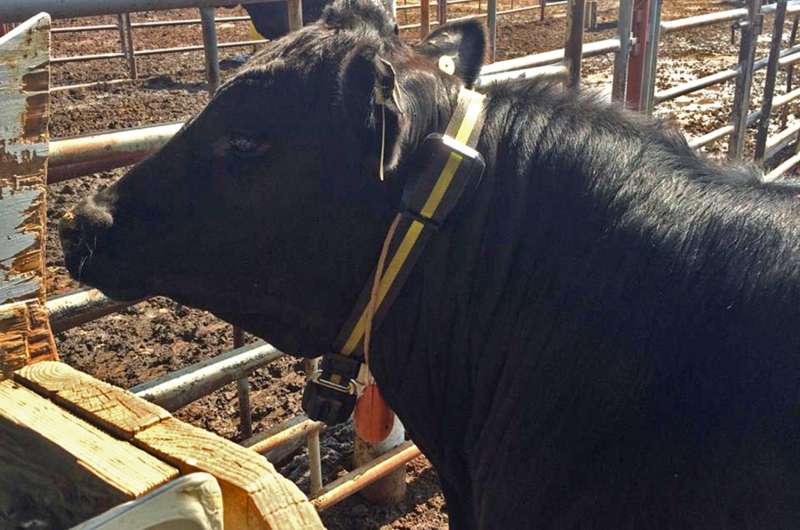Size matters when it comes to forages fed to beef cattle

Just how much forage does a ruminant need if a ruminant does need forage?
Dr. Jenny Jennings, a Texas A&M AgriLife Research beef nutritionist in Amarillo, and her team are on their second research trial aimed at determining forage needs for proper rumination in beef cattle consuming high concentrate diets.
"We want to feed finishing cattle in an efficient manner that best utilizes our commodity resources while maintaining animal health and well-being," Jennings said.
"Roughage has always been known to be an important part of a ruminant's diet, but has been largely forgotten about in feedlot research," she said. "Limited forage in a grain-based diet can result in metabolic disorders on the back end, which can cost the producer and the packer money."
The dairy industry has done extensive forage research in this area, Jennings said, so "I wanted to see if we could come up with a natural abatement strategy with forage to prevent certain metabolic disorders in feedlot cattle. We know we need it, we just don't know exactly how much and particular physical characteristics of the forage that can benefit the animal."
Her team is utilizing expertise and technology from the dairy industry to gather the data, including the use of rumination collars, something that hadn't been done previously in beef cattle. These collars measure when and how long a feedlot animal is essentially chewing its cud.
"We had no idea what the appropriate rumination time was of a finishing beef animal before this study," Jennings said.
She said they have several objectives with this multiyear study funded by the Beef Sustainability Initiative through AgriLife Research. The first year's results were recently published in the Journal of Animal Science and can be found here.
"We want to determine what the optimum rumination minutes are per day in feedlot cattle. We want to know how we can maintain or improve that number with minimal logistic changes for a feedlot.
"And finally, we want to gather enough data on forage sources, particle length and inclusion rate in the diet to develop better capabilities to predict performance based off of forage and diet characteristics."
Because ruminants need that "scratch" factor to aid in rumination or digestibility, Jennings said she started with the premise that maybe grinding the forage less finely, thus making longer stalks or particles, would be the answer instead of adding more forage.
"The challenge was to measure and validate how much forage is needed in finishing beef cattle rations and how forage, particle size and inclusion rate affect performance," Jennings said.
That's when she utilized the collars with the help of SCR Dairy, an entity of Allflex.
The study included 54 head of cattle fed in three different treatments: inclusion of 5 percent long-particle forage, 5 percent short-particle forage and 10 percent short-particle forage to the feed ration.
"We found the 5 percent long-particle ration was very comparable as far as rumination minutes per day as the 10 percent short particle," she said. "The 5 percent short particle had the lowest rumination per day, but the best feed conversion. So where is the balance?"
At the conclusion of the first study using the collars, "we determined feedlots can in fact feed less of a larger particle size of forage and get the same results in rumination as a higher rate of small particle forage," Jennings said.
A major drawback is receiving a consistent particle size in the forage, she said. Fresh hay will chop very consistently, but older hay has a tendency to break down further during processing.
She said they use a Pennsylvania State University particle separator to determine particle size. The goal, once her team collects enough data on forage sources, particle length and inclusion rate, is to create forage modeling software. The software will allow feedlots to similarly measure their finishing rations and predict if they will have the appropriate rumination behavior and performance.
A second study will be conducted this spring. A part of that study will be to measure pH levels in the rumen, using a special bolus and meter to get a better idea of how the different diet treatments are affecting the rumen environment.
"If we can keep the pH up with minimal changes to the current feedlot diets used, we could have an application for commercial feed yards," she said.
Jennings said the study will need to be replicated several more times and tested in a large pen study before predictive models can be finalized for the industry.
Journal information: Journal of Animal Science
Provided by Texas A&M University




















